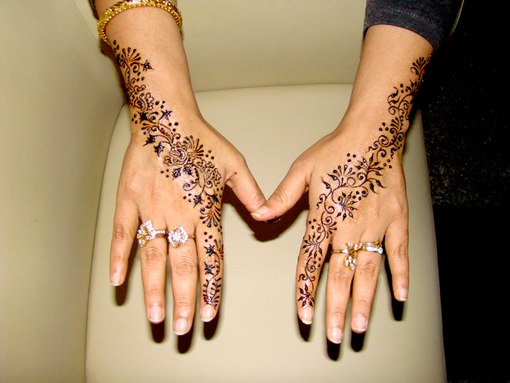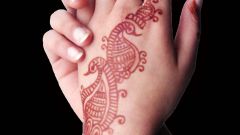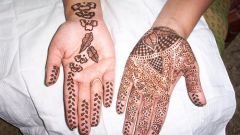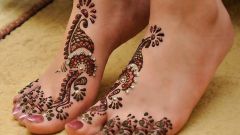The origin of the drawings on the body
This technique of drawing originated in Ancient Egypt and spread in the Eastern and Asian countries. Depending on the culture of the people varies his drawing. It can be in the form of plants, ornaments or Oriental patterns. Henna can be applied on hands, neck, shoulders, stomach, hips and ankles. Most common mehendi on her hands. If you apply the pattern correctly, it can take up to three weeks, brightening every day until complete disappearance.
To decorate the body with biomaterials, it is not necessary to visit the beauty salon. Quite possible to make mehendi at home, prepare own composition for printing. The main component dye in the powder, to which is added a few lemons, sugar and tea tree oil.
Important nuances
Before applying the skin image should be well prepared. In the process of preparation included cleaning with a scrub or peeling, and if necessary, remove the hair from that part of the skin where you intend to draw the image. From the selected bottomrule depends on its future color. In addition to this feature, change the hue, add in the other dye henna (Basma, antimony). In the first few minutes the color of the tattoo will be orange, becoming darker with each passing hour. In 48 hours, he will become a bright reddish-brown hue.
Recipe of dye solution and its application
The powder is sieved in order to avoid problems during application. Next, squeeze the lemon juice and mix it with the powder. The resulting composition is put in a warm place for 12 hours. Then connect it with sugar and essential oil. 20 g of henna should take 50 ml of juice and 1 tsp. sugar and butter. Achieving consistency of toothpaste, to remove the ready in a warm place another 12 hours.
Beginners are recommended to purchase stencils with ready-made drawings. The line can be applied with a toothpick, make-up brushes or syringe without the needle. Masters applied a preliminary version of the pencil, which subsequently cover the dye composition, and after drying wash with water.
These drawings henna on the hands require a long drying time (12 hours). Be aware that the brightness of the picture depends on the residence time of the solution of the henna on the skin. The longer it remains not washed, the brighter will be the colour of the finished bottomrule.
Allowed to cover the pattern with the tape, and to create better conditions expose it to sunlight. After drying the henna should be "scouring", treat the skin with lemon juice and RUB the oil.







